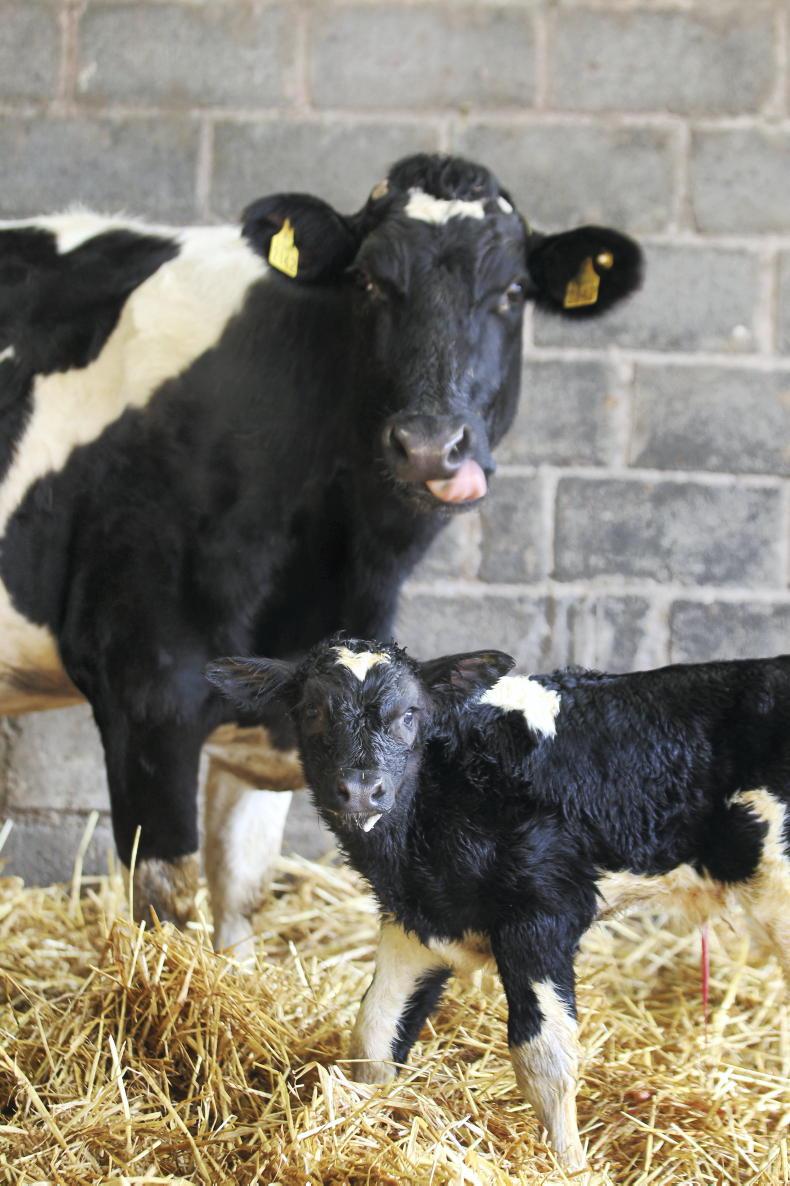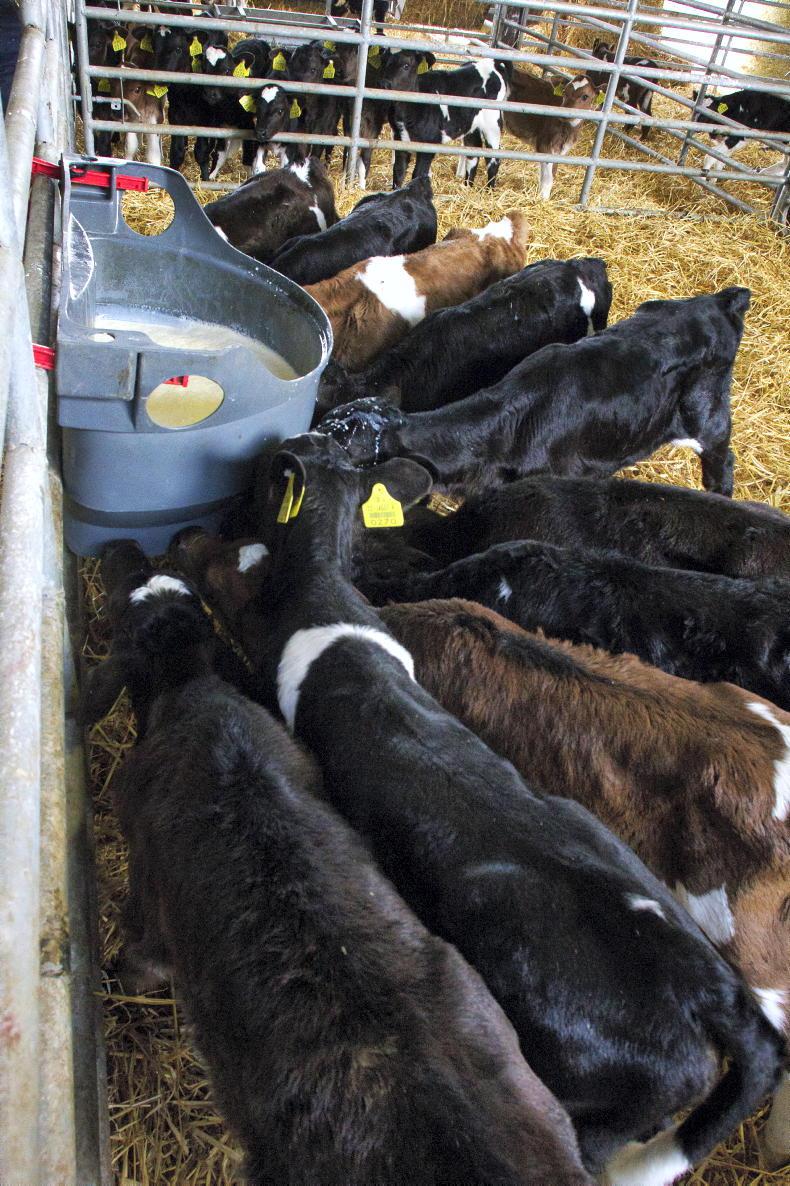Cows have been dry since the start of December on some farms and others have been drying off cows throughout the month of December.
That said, with just a few short weeks to the arrival of this year’s calves, it’s important to use this time to get prepared.
Taking time between now and the start of calving to assess calving and calf-rearing facilities is very important to ensure a smooth start to calving 2022.
Making the necessary improvements to handling facilities and having all equipment prepared will reduce the pressure at the start of calving.

Safety at calving should be a key priority this spring.
Among the priorities in both areas is hygiene and safety.
If not done so already, calving sheds and calf sheds should be power-hosed and disinfected in plenty of time to allow them to dry out pre-calving.
As calving sheds are only used for a short period of the year, they are often used for housing sick animals or other stock throughout the year and a build-up of bacteria can pose a risk to newborn calves.
In the calving shed when dealing with cows both calving and freshly calved, safety must be a priority.
Escape gates
Escape gates that allow the farmer to exit the pen quickly and safely should be a feature in every calving shed. These can be retrofitted or modifications can be made to existing infrastructure to allow a quick exit should the cow become agitated.
Calving gates are a must-have in all calving sheds to allow safe handling of any cows that may need assistance during calving.
In the run-up to the first cow calving, ensure there is a calving jack with a set of calving ropes, calving lube, calving gloves and iodine navel spray/dip in the calving shed.
Teagasc recommends approximately 10ml to 15ml of iodine per navel.

Replace teats on feeders before calves start to arrive.
In the calf shed, it can be a very valuable exercise to do a checklist of all the items required during calf rearing from replacing teats on feeders to ordering new tags.
This gives an opportunity to purchase and replace all the necessary items that will be required.
Items on the list will vary from farm to farm but common items include:
Replacement teats for calf feeders.Ear tags.New stomach tubes/bottles (stomach tubes are often used for sick calves or can be damaged, so Teagasc advises to have two - one for colostrum and one for sick calves).Colostrum storage bags/bottles etc.Electrolytes.Two thermometers (one for calves and one for milk).Footbath with disinfectant at the door of the calf shed.Calf jackets or red lamp.Standard rubber gloves.
Cows have been dry since the start of December on some farms and others have been drying off cows throughout the month of December.
That said, with just a few short weeks to the arrival of this year’s calves, it’s important to use this time to get prepared.
Taking time between now and the start of calving to assess calving and calf-rearing facilities is very important to ensure a smooth start to calving 2022.
Making the necessary improvements to handling facilities and having all equipment prepared will reduce the pressure at the start of calving.

Safety at calving should be a key priority this spring.
Among the priorities in both areas is hygiene and safety.
If not done so already, calving sheds and calf sheds should be power-hosed and disinfected in plenty of time to allow them to dry out pre-calving.
As calving sheds are only used for a short period of the year, they are often used for housing sick animals or other stock throughout the year and a build-up of bacteria can pose a risk to newborn calves.
In the calving shed when dealing with cows both calving and freshly calved, safety must be a priority.
Escape gates
Escape gates that allow the farmer to exit the pen quickly and safely should be a feature in every calving shed. These can be retrofitted or modifications can be made to existing infrastructure to allow a quick exit should the cow become agitated.
Calving gates are a must-have in all calving sheds to allow safe handling of any cows that may need assistance during calving.
In the run-up to the first cow calving, ensure there is a calving jack with a set of calving ropes, calving lube, calving gloves and iodine navel spray/dip in the calving shed.
Teagasc recommends approximately 10ml to 15ml of iodine per navel.

Replace teats on feeders before calves start to arrive.
In the calf shed, it can be a very valuable exercise to do a checklist of all the items required during calf rearing from replacing teats on feeders to ordering new tags.
This gives an opportunity to purchase and replace all the necessary items that will be required.
Items on the list will vary from farm to farm but common items include:
Replacement teats for calf feeders.Ear tags.New stomach tubes/bottles (stomach tubes are often used for sick calves or can be damaged, so Teagasc advises to have two - one for colostrum and one for sick calves).Colostrum storage bags/bottles etc.Electrolytes.Two thermometers (one for calves and one for milk).Footbath with disinfectant at the door of the calf shed.Calf jackets or red lamp.Standard rubber gloves. 







 This is a subscriber-only article
This is a subscriber-only article










SHARING OPTIONS: